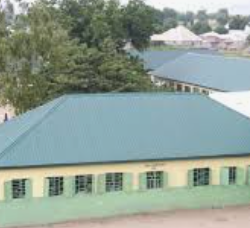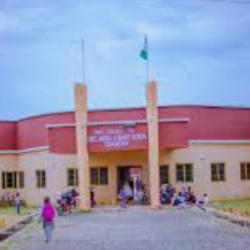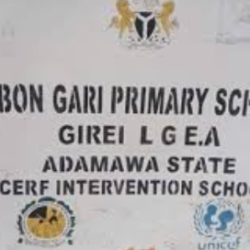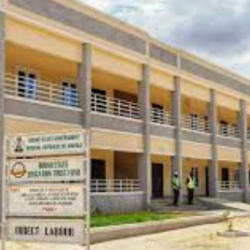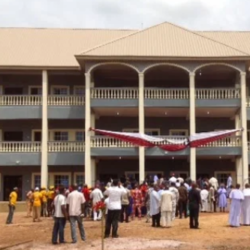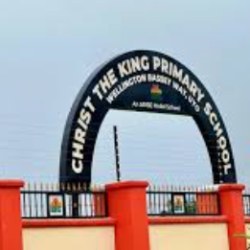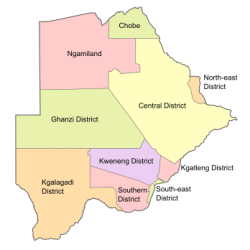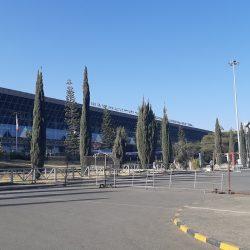Ethiopia officially declared the GERD fully complete in July 2025 with final preparations for a grand inauguration slated for September 2025.
Construction began in 2011 and concluded structurally around 2023.
The Grand Ethiopian Renaissance Dam (GERD) is located in the Benishangul-Gumuz region of western Ethiopia, near the border with Sudan.
📍 Physical Location Details of GERD:
| Feature | Description |
|---|---|
| Region | Benishangul-Gumuz |
| Zone | Metekel Zone |
| Woreda (District) | Guba Woreda |
| River | Blue Nile River (locally known as Abay River) |
| Distance from Addis Ababa | ~500–550 km northwest |
| Distance from Sudanese Border | ~15–20 km east |
| Coordinates | 11.2000° N, 35.0833° E |
🗺️ Location Summary:
- GERD is constructed on the Blue Nile, Ethiopia’s primary contribution to the Nile River system.
- The site is remote, accessible mainly by military roads and infrastructure corridors built specifically for the project.
- The nearest major city is Assosa, but most access is controlled and restricted due to security and operational sensitivity.
This area is not served by a formal street address like in urban zones. Access to GERD is managed by the Ethiopian Electric Power Corporation (EEP) and requires government or utility authorization.
Key technical details:
Size: Approximately 1.8 km wide and 145–175 m high, with a reservoir surface area between 1,874–1,880 km²—roughly larger than London, Paris, and Dublin combined.
Capacity: Installed power capacity originally planned up to ~6,450 MW, but currently realized at 5,150 MW across 13 turbines (11×400 MW and 2×375 MW) with projected annual generation around 15.7 TWh.
📌 While some sources refer to 6,000–6,500 MW as the design goal, final output rests at 5,150 MW. Different sources vary in stated capacity.
🌍 Regional Impact & Energy Export
The dam is positioned to double Ethiopia’s previous electricity capacity, empowering millions who currently lack reliable power.
Ethiopia is poised to become a regional energy exporter, with opportunities to supply Djibouti, Kenya, Sudan, and others.
⚠️ Downstream Concerns & Diplomatic Fallout
Egypt remains firmly opposed to GERD’s operation without a legally binding agreement regarding water allocation, drought protocols, and downstream flows. Egypt has labeled Ethiopia’s unilateral completion of the dam as violating international law.
Sudan’s stance has shifted: while previously resistant, it now appears more amenable to cooperation—especially given potential benefits like flood regulation and electricity access.
Negotiations, including those mediated by the African Union, have repeatedly stalled; no binding trilateral agreement has yet been finalized.
📅 Timeline Summary
Milestone Date
Construction Start 2011
Partial Operation & First Power Generation 2022
Reservoir Final Filling September 2023
Structural Completion Approximately 2023–24
Official Completion Announcement July 2025
Planned Inauguration September 2025
🧭 Strategic Significance
Represents a $4–5 billion Ethiopian-funded mega-project, largely financed domestically via bonds and public contributions—underscoring national determination.
Seen domestically as “a gift to generations” and an emblem of Ethiopia’s sovereign development path.
Prime Minister Abiy Ahmed has emphasized GERD as an opportunity for shared prosperity, asserting that “prosperity for one should mean prosperity for all.”
It spans nearly 1,880 km², aligning with claims about its enormous scale.
Its generating capacity lies around 5,150 MW, though earlier projections ranged up to ~6,500 MW.
Egypt remains strongly opposed, Sudan is more cooperative, and no legally binding water-sharing agreement is in place.
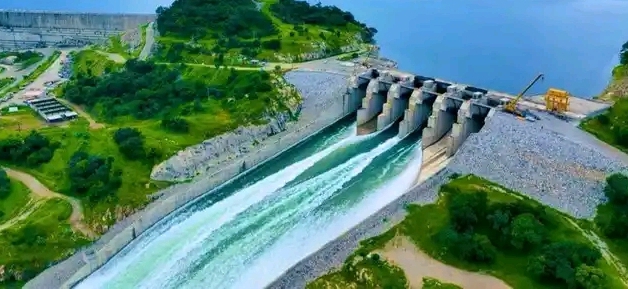
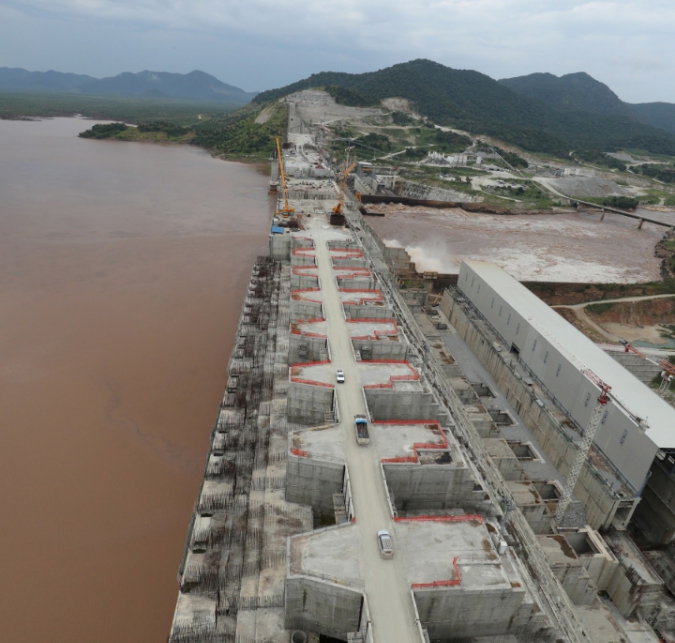
Ethiopia is now a credible regional energy power, with the potential to transform East Africa’s energy landscape.
🔧 Technical Aspects of the Grand Ethiopian Renaissance Dam (GERD)
1. Dam Type & Structural Design
- Type: Roller-Compacted Concrete (RCC) Gravity Dam
RCC dams are built with a dry mix of concrete laid in successive layers—similar to paving a road—allowing fast and cost-effective construction while maintaining structural integrity. - Main Dam Dimensions: Feature Measurement Height ~145–175 meters Length ~1,800 meters (1.8 km) Crest Width ~10 meters Base Width ~120 meters
- Saddle Dam:
- An auxiliary rock-fill embankment dam located ~5 km southwest of the main dam.
- Length: ~5 km
- Height: ~50 meters
- Purpose: Holds back water in areas where the terrain dips to prevent reservoir leakage.
2. Reservoir Capacity and Hydrology
- Surface Area: ~1,874 to 1,880 km²
- Total Storage Capacity: ~74 billion cubic meters (BCM)
- Live Storage (usable water): ~59.2 BCM
- Dead Storage (inactive water): ~14.8 BCM
- Catchment Area: ~172,250 km²
- Located on the Blue Nile River, which contributes ~59% of the Nile’s annual flow at Aswan.
- Annual Inflow: ~49 BCM (varies with seasonal rainfall in Ethiopian Highlands)
3. Power Generation System
- Installed Capacity: 5,150 megawatts (MW) (revised from earlier target of 6,450 MW)
- Turbines:
- 13 Francis-type turbines
- 11 turbines × 400 MW
- 2 turbines × 375 MW
- Hydraulic Head: ~140 meters (effective height of water drop)
- Annual Energy Production: ~15,760 GWh (Gigawatt-hours)
- Powerhouses:
- One on each bank (right and left) of the river
- Equipped with transformers, control systems, cooling systems, and ventilation
4. Construction Materials & Methods
- Roller-Compacted Concrete (RCC):
- Used for the main dam—fast placement, less cement, and low heat of hydration
- Rock Fill and Earth Fill:
- Saddle dam uses compacted rock and soil layers with a waterproof core
- Intake Structures:
- Designed to channel water from the reservoir into the turbines efficiently
- Spillway Capacity:
- Controlled via radial gates
- Design allows for the discharge of ~14,700 m³/s to manage floodwaters
5. Transmission Infrastructure
- High-voltage power lines connect GERD to Ethiopia’s national grid
- Plans to link to the East African Power Pool (EAPP) to facilitate energy exports to:
- Kenya
- Djibouti
- Sudan
- Eventually: South Sudan, Uganda, Tanzania
6. Environmental & Structural Safety Systems
- Sediment Management:
- The Blue Nile carries heavy silt loads. GERD includes sediment flushing outlets to prolong turbine life and maintain reservoir capacity.
- Seismic Safety:
- Located in a relatively stable tectonic zone, but structural designs include stress modeling and redundancy to withstand minor earthquakes.
- Environmental Monitoring:
- Sensors measure water levels, turbidity, seismic vibrations, and structural shifts to ensure real-time safety and system stability.
7. Monitoring & Automation
- SCADA System:
- Supervisory Control and Data Acquisition enables remote monitoring, turbine control, fault detection, and automated grid synchronization.
- Instrumentation:
- Includes piezometers, extensometers, inclinometers, and strain gauges to monitor structural behavior.
